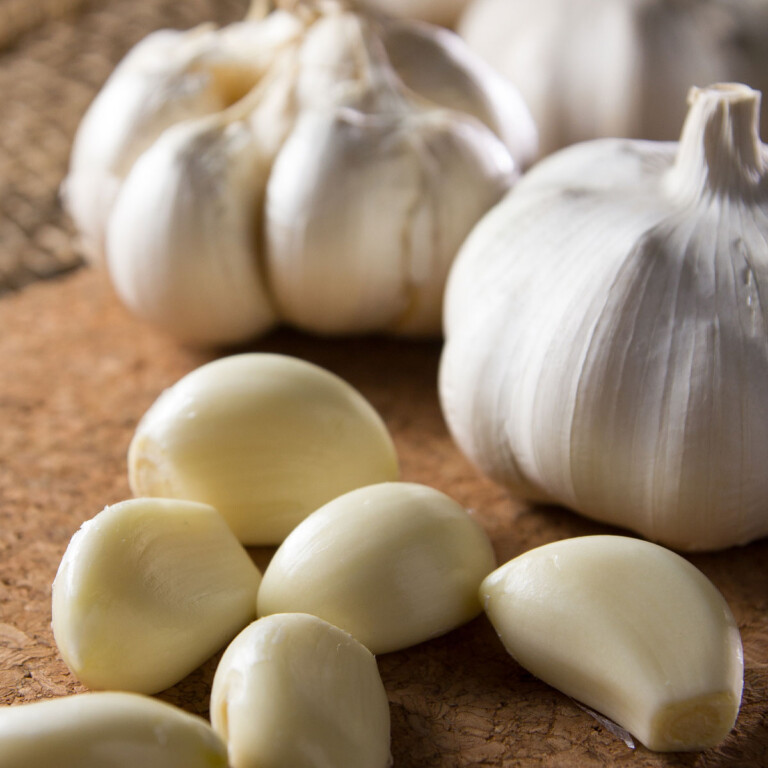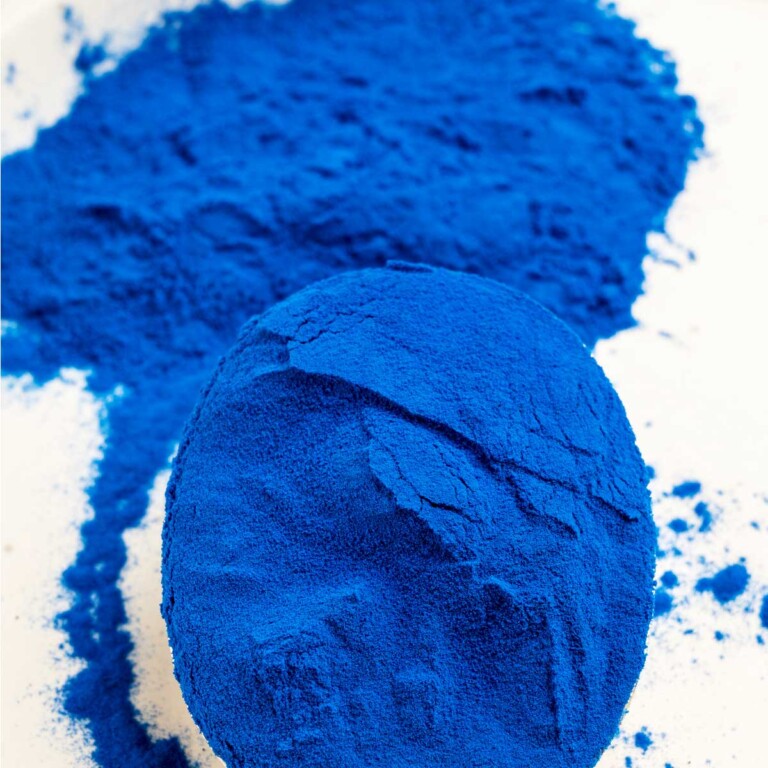Tapioca Vs Arrowroot: The Difference Between These Starches
This post may contain affiliate links. If you make purchase after clicking a link, I may receive a commission at no extra cost to you.
Last Updated on July 17, 2023
Have you been wondering what the difference is between tapioca vs arrowroot flours/starches? While tapioca starch and arrowroot powder may seem similar at first glance, they have distinct characteristics and can be used interchangeably in some cases. Let’s delve into the details of tapioca vs arrowroot, their uses, substitutes, and nutritional value.
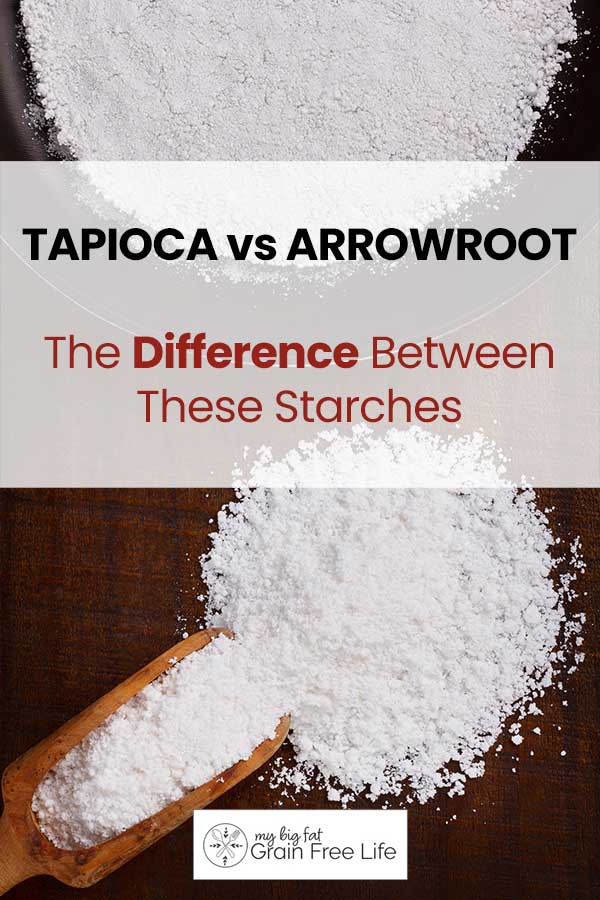
Tapioca vs Arrowroot
In the world of cooking and baking, various starches and flours play a crucial role in achieving the desired texture, consistency, and taste of different dishes.
Two popular options are tapioca and arrowroot, both known for their thickening properties and suitability for gluten-free cooking.
Let’s take a look at tapioca vs arrowroot!
Tapioca
Also known as tapioca flour, tapicoa starch comes from the cassava root, a starchy tuber native to South America.
The cassava root is processed to extract the starch, which is then dried and ground into a fine powder. Tapioca flour is not the same as cassava flour, even though it comes from the cassava root.
Tapioca starch is a popular binding agent in various recipes, including pie fillings, AIP soups, and sauces. When used in baking, it gives a chewy texture to cookies and adds structure to gluten-free bread and gluten free desserts.
Tapioca starch is commonly used in combination with other gluten-free flours like almond flour, coconut flour, and chickpea flour to achieve the desired consistency and texture.

Arrowroot
Arrowroot flour, on the other hand, is derived from the roots of a starchy root vegetable, scientifically known as Maranta arundinacea.
Similar to tapioca starch, arrowroot starch is a gluten-free alternative flour that works well as a thickening agent. It can be used in the same way as tapioca starch in recipes like fruit pies, gravy, and sauces.
Arrowroot is particularly favored for its neutral flavor, which allows it to blend seamlessly with other ingredients without altering the taste of the final product. Moreover, arrowroot has the unique property of thickening at lower temperatures compared to other starches like cornstarch or wheat flour.

Tapioca Vs Arrowroot Nutritional Overview
In terms of nutritional value, both tapioca starch and arrowroot powder are relatively low in calories and do not provide significant amounts of vitamins or minerals.
However, tapioca starch contains a small amount of dietary fiber, which may be beneficial for those following a keto diet or a low-carb diet.
Arrowroot powder, on the other hand, has a lower glycemic index compared to tapioca starch, making it a better option for individuals concerned about blood sugar levels.
Nutrition of Tapioca Flour
Tapioca flour is primarily a source of carbohydrates. However, it doesn’t provide significant amounts of other essential nutrients.
Here is an approximate nutritional breakdown of tapioca flour per 100 grams:
- Calories: Around 358 calories.
- Carbohydrates: Approximately 88 grams, consisting mostly of starch. These carbohydrates provide energy.
- Fiber: Tapioca flour contains very little dietary fiber, usually less than 1 gram per 100 grams. As a result, it is not a significant source of fiber.
- Protein: Tapioca flour has minimal protein content, usually less than 1 gram per 100 grams.
- Fat: Tapioca flour is low in fat, with less than 1 gram per 100 grams.
- Vitamins and Minerals: Tapioca flour is not a notable source of vitamins or minerals. While it may contain trace amounts of certain minerals, they are not present in significant quantities.
While tapioca flour does not provide significant amounts of essential nutrients, it does offer some benefits:
- Carbohydrates: Tapioca flour is primarily composed of carbohydrates, making it a good source of energy. It contains mostly starch, which provides readily available glucose for fueling the body and brain.
- Gluten-Free: Tapioca flour is naturally gluten-free, making it suitable for individuals with gluten sensitivities or celiac disease. It serves as an excellent alternative to wheat flour in gluten-free baking and cooking.
- Easy Digestion: Tapioca flour is easily digested and well-tolerated by most people. It can be a helpful option for individuals with sensitive stomachs or digestive issues.
- Low in Fat and Protein: Tapioca flour is relatively low in fat and protein. While this may not be seen as a nutritional benefit per se, it can be advantageous for those following specific dietary patterns that restrict fat or protein intake.
- Folate: Tapioca flour contains small amounts of folate, a B-vitamin essential for the production of new cells and the synthesis of DNA. Folate is particularly important during pregnancy for proper fetal development.
To ensure a well-balanced diet, it’s important to consume a variety of nutrient-rich foods alongside tapioca flour.
Nutrition of Arrowroot
While arrowroot flour is primarily used as a thickening agent, it also offers some nutritional benefits.
Here’s a breakdown of its nutritional value per 100 grams:
- Calories: Approximately 357 calories.
- Carbohydrates: Around 88 grams, consisting mainly of starch, which provides energy.
- Fiber: Roughly 7 grams of dietary fiber, which aids in digestion and supports bowel regularity.
- Protein: Less than 1 gram, making it a negligible source of protein.
- Fat: Less than 1 gram, making it low in fat.
- Vitamins: Arrowroot flour is not a significant source of vitamins, with the exception of a small amount of vitamin B9 (folate).
- Minerals: It contains trace amounts of minerals, including potassium, iron, phosphorus, and magnesium.
Arrowroot offers several nutritional benefits, including:
- Digestive Health: Arrowroot is known for its soothing effect on the digestive system. It contains a type of starch called resistant starch, which functions as a prebiotic. Prebiotics promote the growth of beneficial gut bacteria, which can contribute to improved digestion and overall gut health.
- Gluten-Free: Like tapioca flour, arrowroot flour is gluten-free, making it a suitable option for individuals with gluten sensitivities or celiac disease. It can be used as a substitute for wheat flour in gluten-free baking and cooking.
- Low in Fat and Protein: Arrowroot flour is low in fat and protein, which can be beneficial for those following specific dietary patterns that restrict these nutrients.
- Source of Dietary Fiber: Arrowroot contains a moderate amount of dietary fiber. Fiber supports digestive health, helps regulate bowel movements, and may contribute to a feeling of fullness.
- Nutrient Absorption: Arrowroot may help enhance nutrient absorption. It has been traditionally used to alleviate diarrhea, as it can help bind loose stools and aid in the absorption of water and nutrients.
- Easy Digestion: Arrowroot is easily digested, making it suitable for individuals with sensitive stomachs or those recovering from digestive ailments.
- Potential Blood Sugar Regulation: Some research suggests that arrowroot may have a positive impact on blood sugar levels. Its high resistant starch content and low glycemic index may help regulate blood sugar levels and improve insulin sensitivity.
While arrowroot does not offer significant amounts of vitamins or minerals, it can be a valuable addition to a balanced diet due to its digestive benefits, gluten-free nature, and potential blood sugar regulation properties. As with any food, it’s important to consume arrowroot in moderation and as part of a diverse and nutrient-rich eating plan.
Arrowroot is gentle on the digestive system and is often used in recipes for individuals with sensitive stomachs or those recovering from illness.
Tapioca vs Arrowroot Substitutions
When it comes to substituting tapioca starch and arrowroot powder, there are various alternatives available.
In recipes that require tapioca starch, you can use an equal amount of arrowroot powder as a 1:1 substitute. Both tapioca starch and arrowroot powder can also be replaced with corn starch using the same ratio.
However, it’s worth noting that cornstarch imparts a glossy finish to dishes, which may not be desirable in all recipes.
Additionally, for those following a grain-free or paleo diet, other options such as sweet rice flour or potato flour can serve as suitable alternatives. Of course, if you are on a diet that restricts nightshades, then you won’t want to use potato starch.
Other Thickening Agents
If you find yourself without any of these starches, there are other ingredients that can work as thickening agents in a pinch.
Xanthan gum, psyllium husk, or even a tablespoon of cornstarch mixed with cold water can be used as substitutes, though their effects may vary.
Coconut flour, with its high dietary fiber content, can also be used as a thickener in small amounts, especially in gluten-free cooking.

Paleo-friendly Flours
When following a paleo diet, which emphasizes whole, unprocessed foods and avoids grains, beans and legumes, there are several paleo-friendly gluten-free flours and starches you can use as alternatives.
These options allow you to create delicious baked goods and thicken sauces while staying true to the principles of the paleo lifestyle. Here are some paleo-friendly flours and starches you can incorporate into your cooking and baking:
Almond Flour: Made from blanched almonds, almond flour is a popular gluten-free flour in paleo baking. It adds a slight nutty flavor along with a nice moist texture to baked goods.
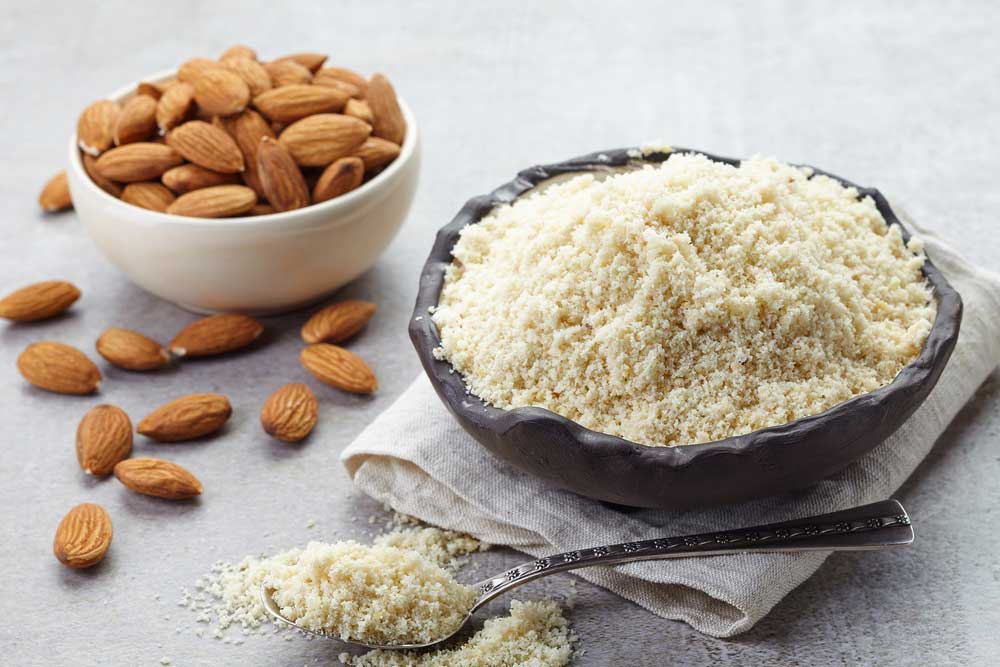
Coconut Flour: Derived from dried coconut meat, coconut flour is highly absorbent and requires more liquid in recipes. It imparts a mild coconut flavor and can be used in a variety of baked goods.
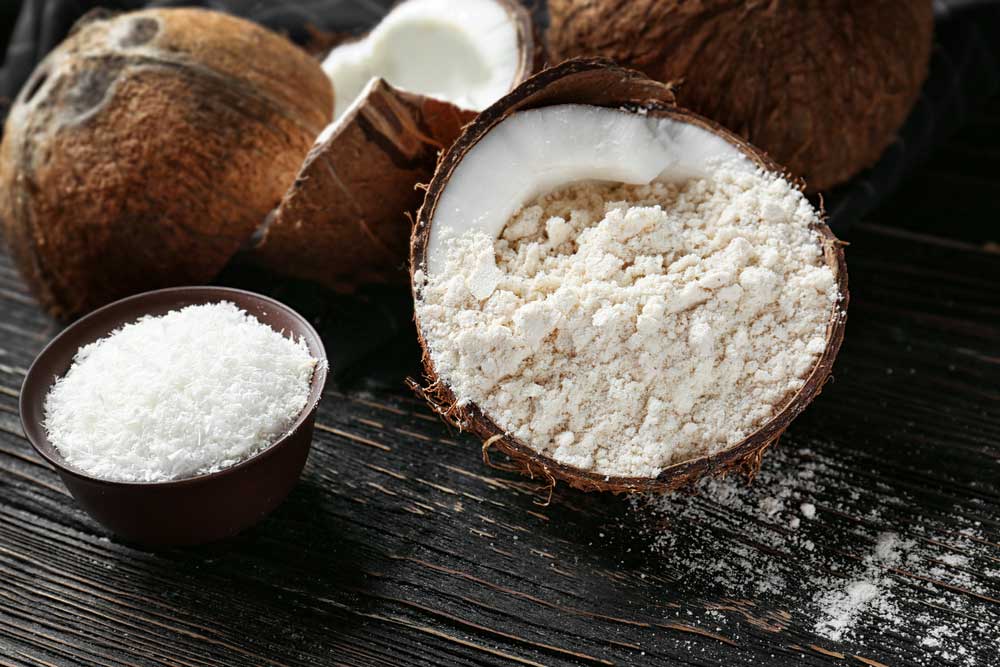
Tapioca Flour/Starch: Tapioca flour, derived from cassava root, is a paleo-friendly starch commonly used as a thickening agent and in gluten-free baking. It provides a chewy texture and works well in combination with other paleo flours.

Arrowroot Flour/Starch: As mentioned earlier, arrowroot flour is a gluten-free option that works as a great substitute for thickeners like corn starch. It has a neutral flavor and is widely used in paleo cooking and baking.

Cassava Flour: Made from the whole root of the cassava plant, cassava flour is a versatile paleo flour and a great gluten-free substitute for all-purpose flour. It has a mild taste and can be used as a 1:1 replacement for wheat flour in many recipes.
It’s good to note that not all cassava flour gives the best results. We prefer Otto’s cassava flour because it’s the best!
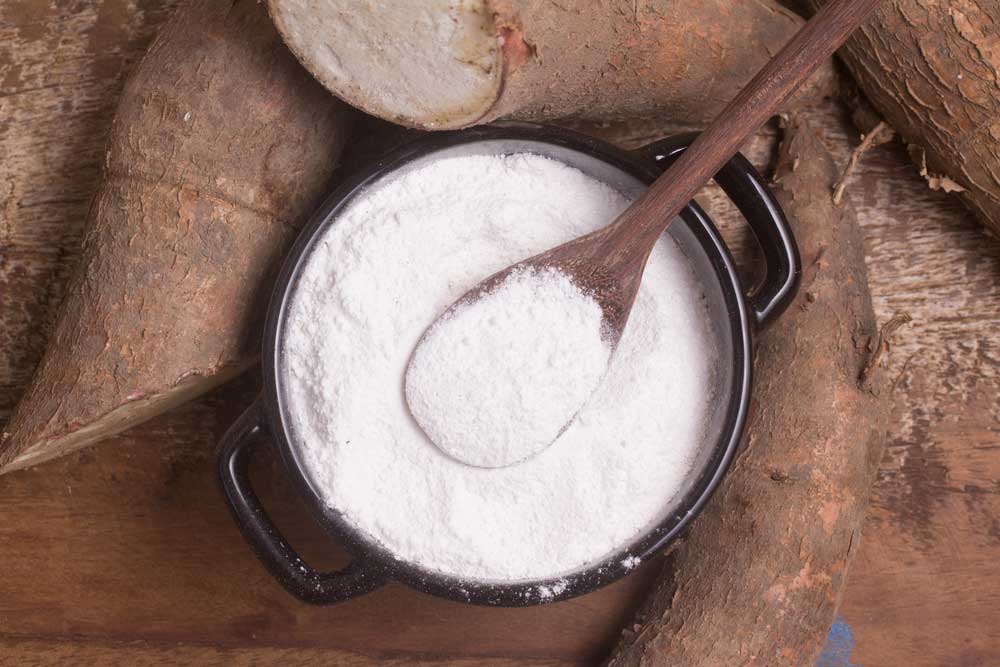
Sweet Potato Flour: Sweet potato flour is made from dehydrated sweet potatoes and adds a slightly sweet and earthy flavor to baked goods. It is a good source of dietary fiber and works well in both sweet and savory recipes.
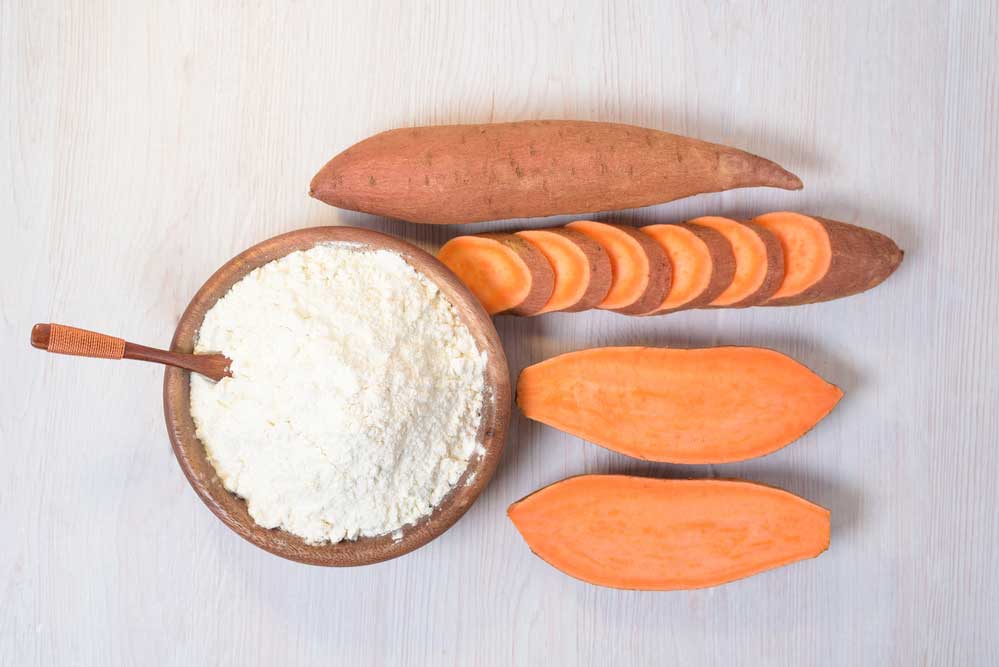
Plantain Flour: Plantain flour is made from dried and ground green plantains. It adds a slightly sweet and tropical taste to recipes and is commonly used in paleo-friendly bread and pancakes.
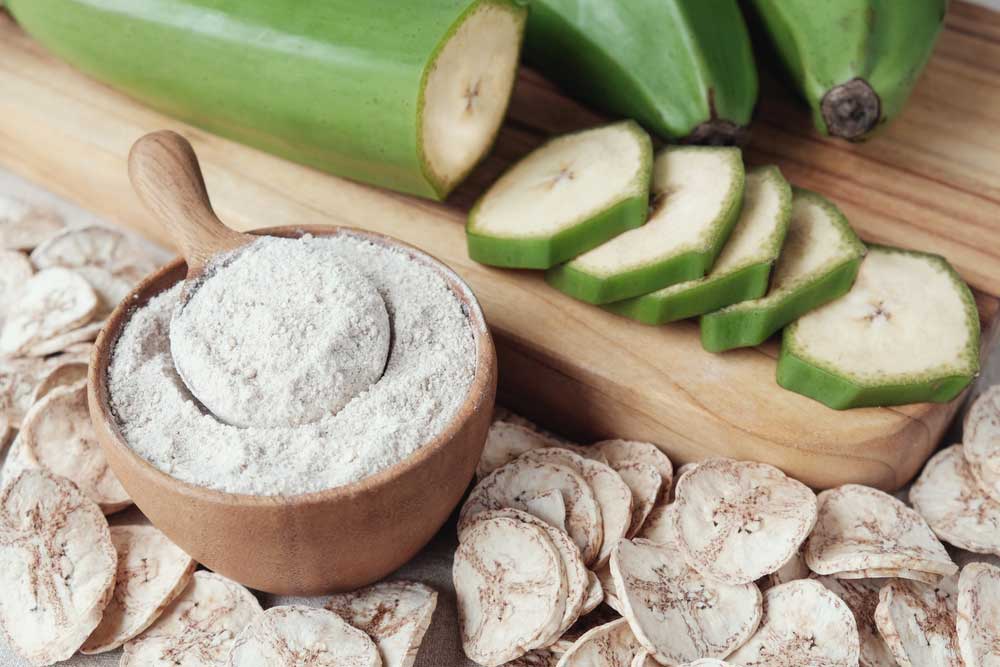
Hazelnut Flour: Hazelnut flour is made from finely ground hazelnuts. It adds a rich, nutty flavor to baked goods and can be used in combination with other paleo flours.
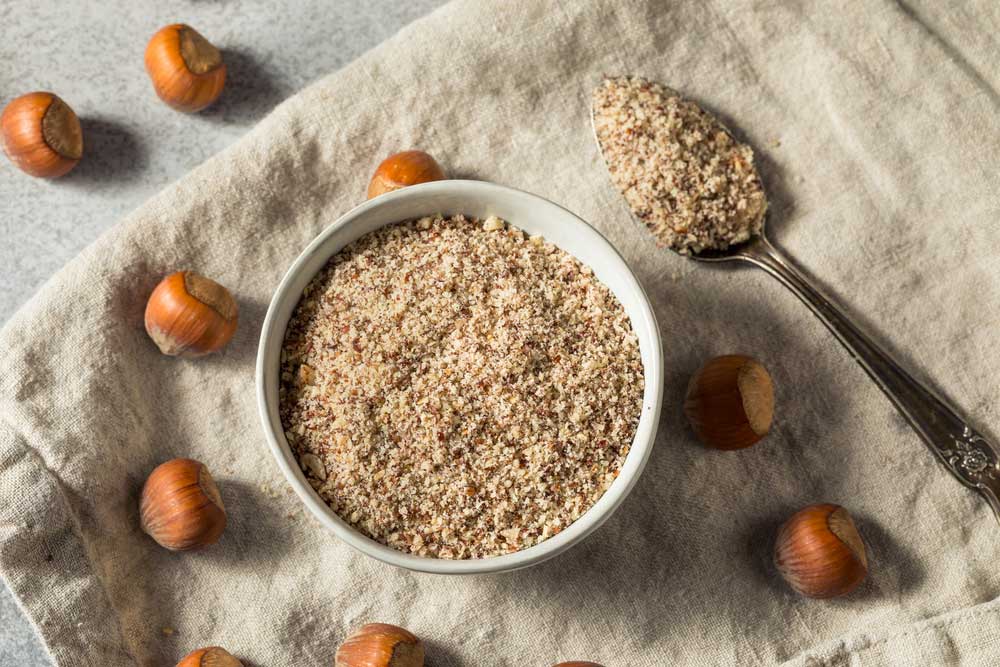
Chestnut Flour: Chestnut flour is derived from ground chestnuts and offers a slightly sweet and nutty taste. It works well in baked goods and can be used as a base for pancakes and crepes.
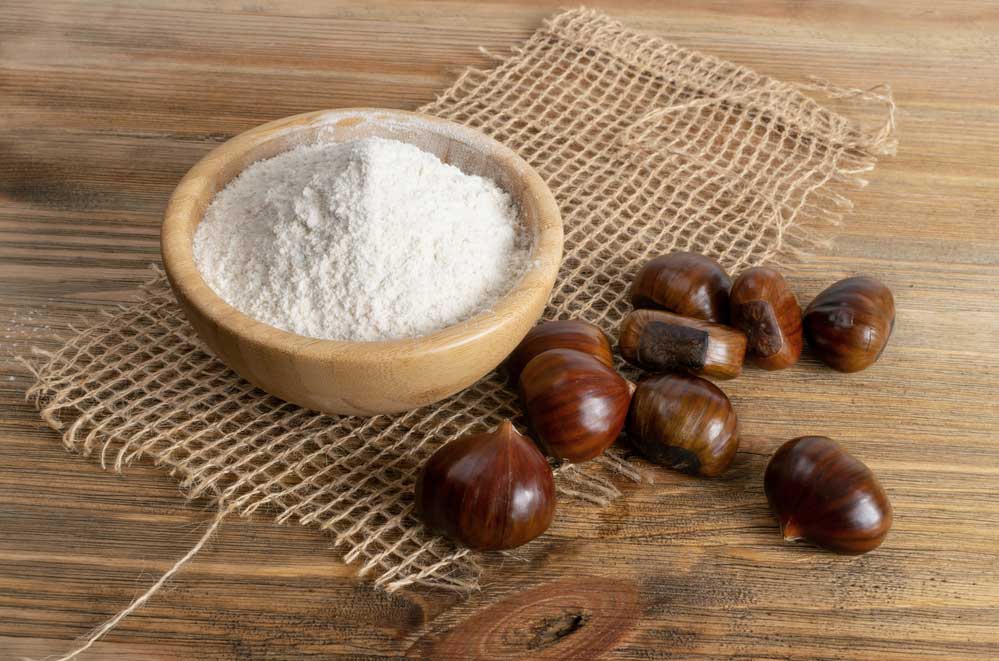
Green Banana Flour: Green banana flour is made from unripe, green bananas and has a mild flavor. It is a good source of resistant starch and can be used in a variety of recipes.
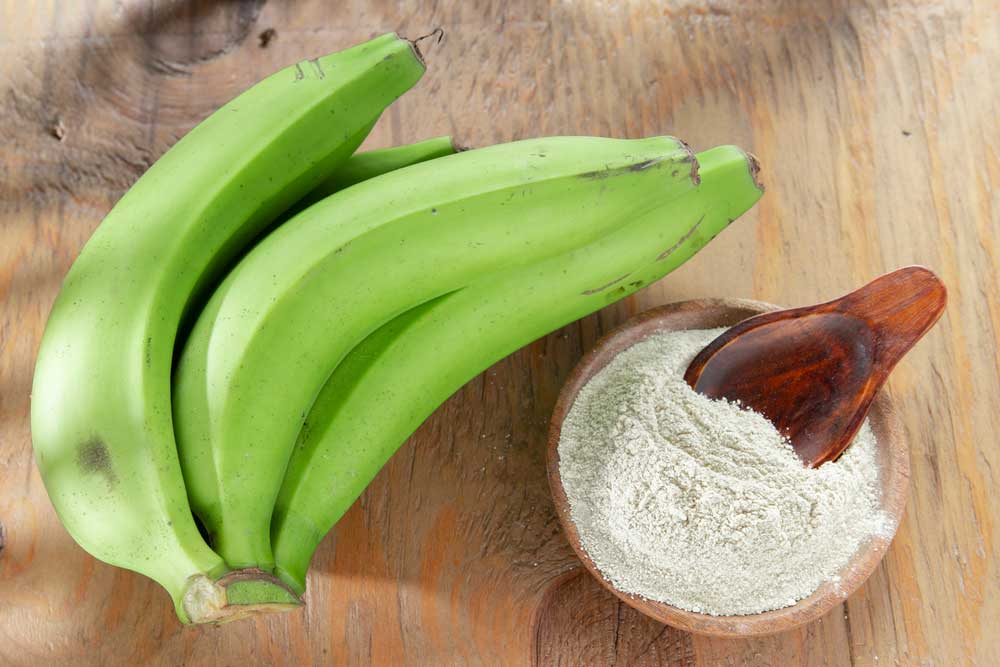
Paleo Flours
These paleo-friendly flours and starches provide alternative options for individuals following a paleo diet. Substituting any of these options in place of all-purpose flour in baked goods and other dishes makes it easy to maintain a grain-free lifestyle.
Experimenting with these flours can open up new possibilities in paleo cooking and baking, providing you with delicious and satisfying results.
Final Summary
To summarize, tapioca starch and arrowroot powder are versatile ingredients commonly used as gluten-free substitutes for traditional flours. While they share similar properties as thickeners and binding agents, they have distinct textures and flavor profiles.
Both tapioca starch and arrowroot powder can be used interchangeably in most recipes, and in a pinch, substitutes like cornstarch, potato starch, or even coconut flour can be utilized.
Ultimately, choosing between tapioca vs arrowroot depends on personal preference, dietary restrictions, and the desired outcome of the dish. Experimenting with these different starches can lead to exciting culinary discoveries and enhance gluten-free baking and other dishes.



